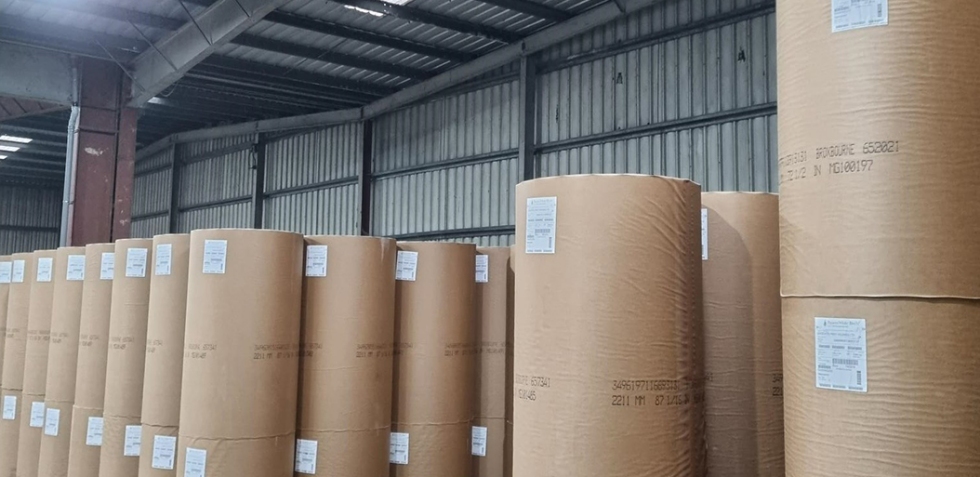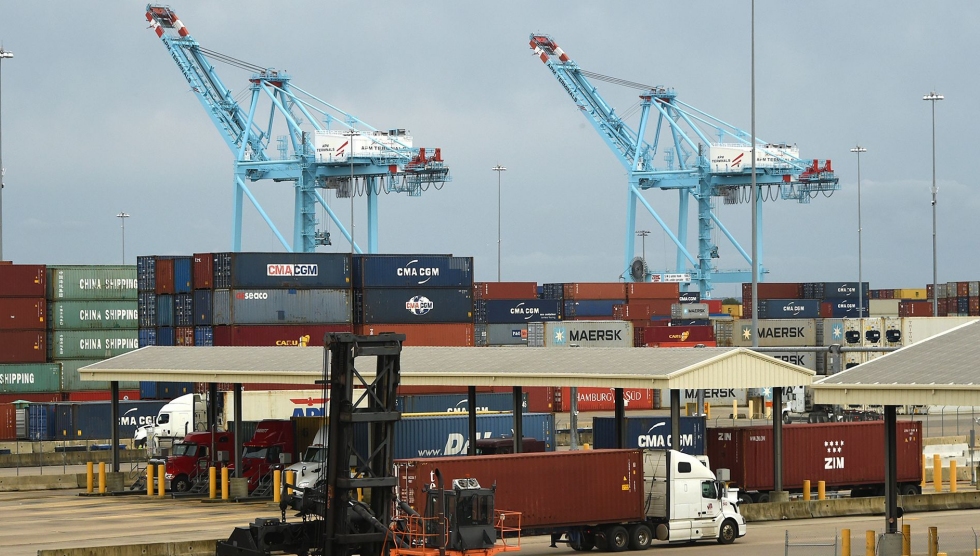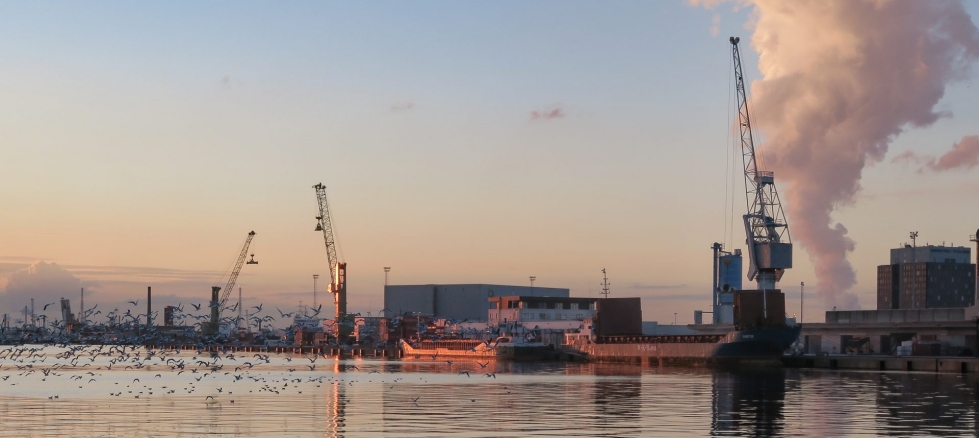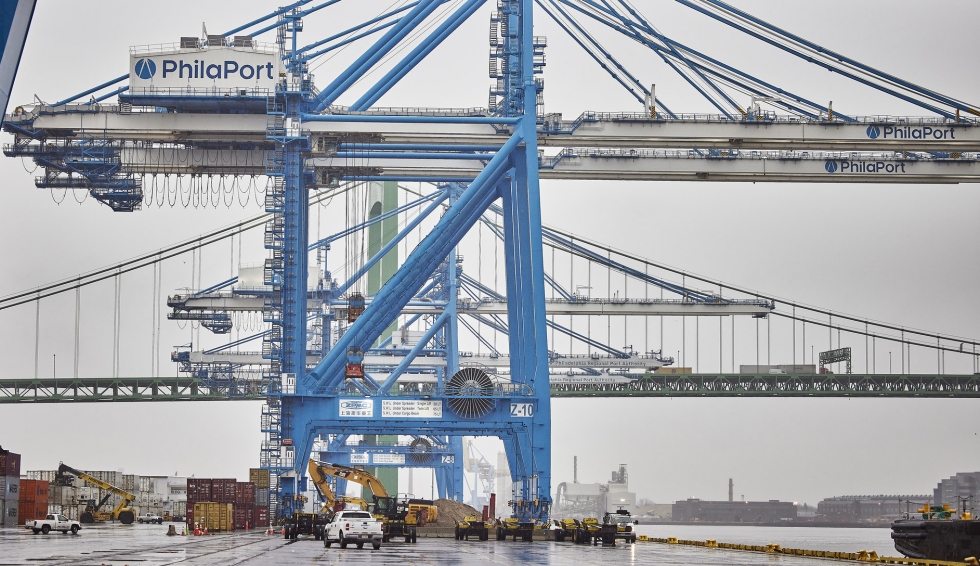|

Associated British Ports Welcomes Return of Seacon (AG)
Feb. 21, 2022 (Press Release) - Associated British Ports (ABP) is delighted to support Seacon (SG) re-establish its northern base at the Port of Garston. Seacon (SG), a UK port-based terminal operator specialising in the handling of forest products, was originally founded in Garston in 1983 under the name Stanton Grove.
The cargo handling, storage and distribution services provider which operates a terminal at the Port of Tilbury (London) is now expanding its operations and is set to return to its roots. As of February 2022, Seacon (SG) will once again operate a forest product terminal at the Port of Garston.
ABP has concluded a lease with Seacon (SG) for 50,000 sq. ft. covered storage at the port. By re-establishing a base at ABP’s Port of Garston, Seacon (SG) will be able to service its customers from two locations, bringing multiple products closer to their end market. This strategic decision will save millions of road miles every year and reducing the company’s carbon footprint.
Brian McFarlane, Garston Port Manager said: “We are delighted to welcome Seacon (SG) back to the Port of Garston and look forward to working collaboratively to support their growth ambitions. We look forward to working with Seacon to support their existing customer base and expanding our Port offering to service break bulk vessels.”
Seacon (SG) Managing Director, Martin Phillips said: “When the opportunity to re-establish ourselves in the North West of England arose, we needed a partner who could provide a rapid and flexible solution. ABP were speedy and supportive in initial discussions, enabling us to confidently offer our usual suite of services in double-quick time. We are delighted to have been able to reach the point we have so far, and we look forward to developing both our presence in Garston Docks – a location that provides an excellent multi-modal option for customers – and our partnership with ABP.”
ABP is the UK’s leading ports group. Its network of 21 ports handles about 25 percent of the UK’s seaborne trade and about £150 billion of UK trade annually.
SOURCE: Associated British Ports |
|

Alabama Port Authority to Build Inland Intermodal Transfer Facility in Montgomery
Feb. 18, 2022 - The Alabama Port Authority board of directors recently approved a $2.042 million purchase of 272 acres in Montgomery, Alabama, to construct an inland container intermodal transfer (ICTF) facility. The project will extend intermodal rail service from the Port Authority’s container intermodal terminal at the Port of Mobile in support of Alabama regional growth in manufacturing, retail, distribution, and agribusiness sectors.
“This project will provide our shippers cost-competitive transportation services to and from one of the nation’s fastest growth containerized cargo gateways,” said John C. Driscoll, director and chief executive officer for the Alabama Port Authority.
When constructed, the intermodal container transfer facility at Montgomery will be serviced by CSX Transportation (CSXT) Intermodal. The project reestablishes regularly scheduled CSXT Intermodal rail service at the Port of Mobile and provides a foundation to expand intermodal services further inland to support CSXT customers. CSXT will contribute up to $12.5 million toward infrastructure improvements in the facility.
Phase I of the facility is estimated at $54 million and could take up to two years to construct. The project connects inland Alabama shippers to the seaport’s intermodal container transfer facility at Mobile, which is located adjacent to the marine terminal and is accessible to five national Class 1 railroads.
The project when completed will generate 2,618 direct and indirect jobs, $340 million in business revenues and over $14.2 million in state and local taxes.
The Alabama State Port Authority oversees the deep-water public port facilities at the Port of Mobile. The Port Authority’s container, general cargo and bulk facilities have immediate access to two interstate systems, five Class 1 railroads, nearly 15,000 miles of inland waterways and air cargo connections.
SOURCE: Alabama State Port Authority |
|

Navis to Supply Euroports with TOS for Bulk and Break-Bulk Terminals
Feb. 10, 2022 - Navis, a provider of operational technologies and services that helps streamline operations across the cargo supply chain, announced a new partnership agreement with Euroports consisting of a multi-terminal implementation of Master Terminal by Navis.
According to Navis, the initial 5 year Master Terminal by Navis plus managed services subscription agreement includes a three-phased plan for several terminals with a targeted go live within 3 years. With a focus on Euroports’ break-bulk facilities, the Navis TOS (terminal operating system) will replace legacy systems, applying standardization for greater consistency and efficiency across Euroports’ network.
Euroports’ core business centers around port operations in strategically located terminal areas that allow producers and shippers to reach key consumer markets across Europe and China. Currently, Euroports is seeking an integrated, real-time view of all operations and data, consolidating performance results on a group level. With Master Terminal, Euroports will be able to address the complex challenges of managing break-bulk and bulk-cargo, better track operations and increase efficiency in administration and communication, allowing them to make smarter decisions faster for improved productivity and operational efficiency across the entire organization.
"We are putting a platform in place to provide operational excellence throughout our worldwide presence," said Geert Gekiere, Chief Financial Officer of Euroports. "This involves a customer-centric solution that captures best practices, consistent communication and efficient administration. The goal is to identify the most suitable solutions for all our stakeholders."
"Break-bulk terminals face a unique set of challenges when it comes to managing cargo," said Jacques Marchetti, VP & General Manager, Navis EMEA. "Having the entire Euroports global network on one central system will offer invaluable insights into the real time moves and data, not just at the ground level of each terminal, ultimately enabling business improvements network-wide."
Navis is a provider of operational technologies and services that unlock greater performance and efficiency for the world’s leading organizations across the cargo supply chain. To learn more, visit: www.navis.com
SOURCE: Navis |
|

PhilaPort Receives $246 Million in State Funding to Bolster Port Development
Feb. 7, 2022 - Pennsylvania Governor Tom Wolf on Feb. 4 announced a $246 million state investment into the Port of Philadelphia to continue modernization efforts and improve regional economic stability. This funding builds upon the Governor’s comprehensive $300 million Capital Investment Program at the Port of Philadelphia announced in 2016.
In 2016, Governor Wolf announced his Port Development Plan to redevelop underutilized areas of the Port of Philadelphia by investing more than $300 million in the port’s infrastructure, warehousing, and equipment. Critical infrastructure investments included the purchase and implementation of three new super post-Panamax cranes at the Packer Avenue Marine terminal, the building of two new state-of-the-art warehouses, and the development of the SouthPort Auto Terminal, the first new port terminal in more than 45 years. Since implementing the infrastructure improvement plan the port has realized record breaking cargo volumes, nearly 60 percent container growth, and created thousands of new jobs.
“Governor Wolf’s leadership and vision breathed new life into the Port of Philadelphia,” said Executive Director and CEO of PhilaPort Jeff Theobald. “He has given us the tools to take our meaningful place as the gateway of choice for global cargoes.”
U.S. Senator Bob Casey said, “The Port of Philadelphia is one of the most critical links in the country’s supply chain,” said U.S. Senator Bob Casey. “Its success is vital to the economic health of Pennsylvania and its impacts ripple throughout the commonwealth. This investment will create jobs not only at the port, but also for workers who transport goods across the region and the country.”
Senator Nikil Saval added, “PhilaPort is the fastest growing port in the United States, serving as a crucial point of connection between our country and the rest of the world, and providing our region with good, family-sustaining jobs. This investment in PhilaPort will help solidify Pennsylvania’s preeminence along the Eastern Seaboard in ensuring the smooth transit of essential supplies.”
SOURCE: Port of Philadelphia |
|
|